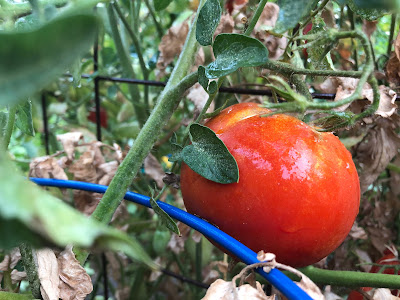How to save your plants during a heat wave
By Debbie Arrington
As the weather forecasters like to say: We’re having a heat wave!
Triple-digit days dominate our Sacramento forecast at least through Saturday. In its Excessive Heat advisory, the National Weather Service warns, “Drink plenty of water; don’t wait until you’re thirsty.”
That same advice applies to your garden. Plants with roots in soil that stays evenly moist – not soggy – have the best chance of surviving, even thriving during this heat wave.
The secret is to keep the soil from completely drying out – not on top, but down 4 to 6 inches in the root zone. Use a moisture meter to check. Or use a long-handled screwdriver; if you can’t shove it in 6 inches, you need to irrigate.
Potted plants in containers are especially at risk. The rootball contracts as it dries out, leaving gaps around the sides of the pot. When you pour water on a severely dry potted plant, the water tends to run out the sides without ever penetrating the rootball. In such cases, you may need to submerge the pot in water, let soak for a few minutes, then drain. Don’t let the roots sit in standing water; they’ll suffocate.
Wilting in the heat of the afternoon is normal for many plants, especially those with big thin leaves such as hydrangeas or squash. But if plants are wilted in the morning, water immediately.
 |
Burlap or shade cloth can help prevent sunburn on tomatoes or other summer vegetables. |
Spider mites in particular are loving this heat; this itty-bitty arachnid thrives in hot and dusty conditions. If you see wispy webs covering leaves and stems of shrubs and other plants, knock them down with a strong stream of water from the hose.
This summer shower destroys their webs and washes the mites and dirt off the plants. It also disrupts what attracted the mites in the first place – dry, dusty leaves.
Wash mites off plants early in the morning, so the plant’s foliage has all day to dry. Fungal diseases usually aren’t a problem right now; powdery mildew can’t stand anything above 90 degrees.
This same approach also works against aphids. Showering plants is not wasting water; the runoff will go to the plant’s roots. Most plants also absorb moisture via their foliage.
Avoid spraying neem oil or other treatments (often recommended for pest control). The oil coats the plant’s foliage and increases its sensitivity to extreme heat. Instead of helping the plant, the oil “cooks” its tender leaves.
And put off any fertilization until weather cools back to normal. Feeding increases a plant’s water needs. During this heat, it just adds to plant stress.
For more on heat stress and plants, check out this advice from the UC Integrated Pest Management Program: http://ipm.ucanr.edu/PMG/GARDEN/ENVIRON/thermal.html.



Comments
Post a Comment